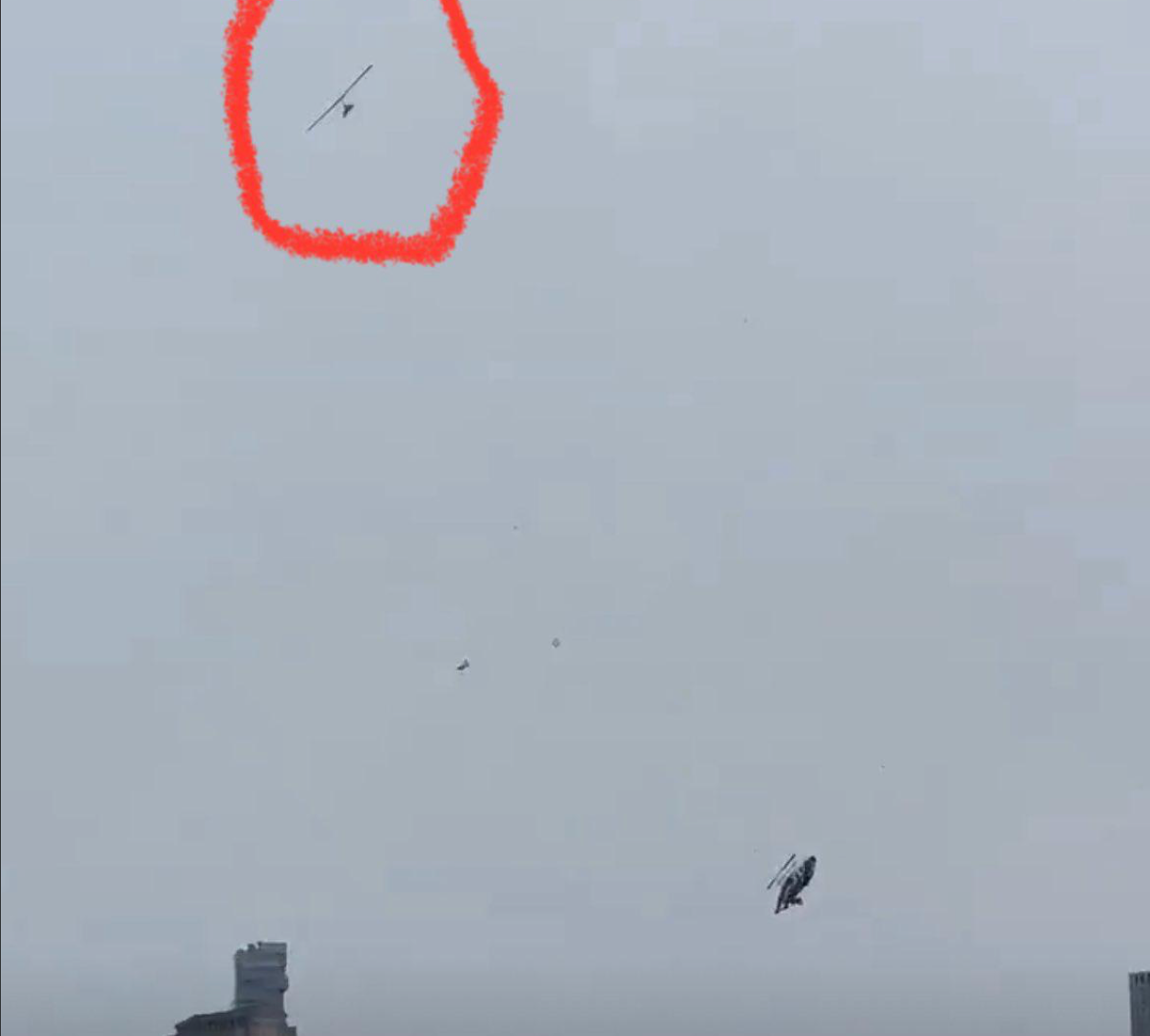The Pilot’s Lounge #26:Scud Running – Discussing a Delicate Subject
There’s a right way and a wrong way to do anything. So it is with scud running, that time-honored practice of scooting under weather to get to a destination. Lately, though, the practice has gotten much more dangerous, partly because it’s not being properly taught any more. While that may be a good thing, people are still finding ways to bend sheet metal at low altitudes. AVweb’s Rick Durden shows you how to scud run, then shows why you shouldn’t.
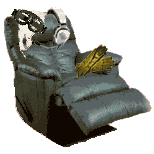
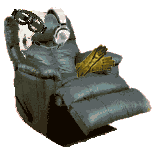 It's a bit disconcerting when it happens. Every once in a great while someone says something that causes your jaw to drop in utter amazement. You stare at the person who just made the statement because you can't comprehend its magnitude. Meanwhile, your tonsils are attracting flies.
It's a bit disconcerting when it happens. Every once in a great while someone says something that causes your jaw to drop in utter amazement. You stare at the person who just made the statement because you can't comprehend its magnitude. Meanwhile, your tonsils are attracting flies.
It happened to me recently, here in the Pilot's Lounge at the virtual airport, when old Hack walked up, took me aside and said he wanted to get his instrument rating. I think he said something else but my brain locked up. I was busy trying to digest the concept that this guy, in his 70s, who had spent his flying life defiantly operating under VFR and a great portion of that time ridiculing the pantywaists who had to use instruments to fly, who was always able to get back to our airport by scud running because he knew every landmark for a 20-mile radius, had just said that he wanted to get an instrument rating. Of the people that I thought would never go for an instrument ticket, Hack was the name on the list in large, gold-plated letters.
This had the feel of the end of an era, of a monument to the old stick-and-rudder, wind-in-the-face pilots, crumbling into dust. When I was finally able to speak, I said what first came to mind, "Hack, why?"
Hack looked me straight in the eye and just said, "Scud running isn't safe any more."
His sentence hit me hard. I had never thought of Hack as a particularly safety-conscious pilot. His comment opened up an entirely new side of my friend and made me want to know a lot more. We went over to a corner of the lounge where we could talk without interruption. Naturally, I wanted to talk scud running, but we needed to get through the business of agreeing on a program that Hack and I would follow toward getting his instrument rating. I wasn't a bit worried about him being able to get the rating. He may be the local curmudgeon, but he's one of the smartest curmudgeons I've ever met. In addition, I'd ridden with him in his Super Cruiser; he was smooth and precise all of the time. He wanted to make sure I was willing to give dual in clouds. Absolutely. He asked about dual in thunderstorms. I refused.
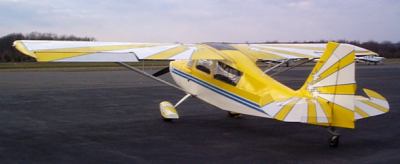 With the preliminaries out of the way, I pressed Hack about his thoughts and practices when it came to scud running, and, more importantly, why someone as experienced as he had stopped doing it. Then I sat, listened and learned. I'll try to relate as much as I can recall from the conversation.
With the preliminaries out of the way, I pressed Hack about his thoughts and practices when it came to scud running, and, more importantly, why someone as experienced as he had stopped doing it. Then I sat, listened and learned. I'll try to relate as much as I can recall from the conversation.
Dare We Discuss Scud Running Openly? In Public?
As a veteran of World War II, Hack was one of the thousands who benefited from what was the best piece of legislation ever to pass Congress over the determined opposition of the Republicans in this century, the G.I. Bill of Rights. Hack and thousands of young men and women, who would never have gone to college, took advantage of this farsighted law to obtain unprecedented levels of education, education that powered this country's economic engine for decades. As a result of the G.I. Bill, Hack not only got an advanced degree in geology, he picked up his private pilot ticket. Not long after that he helped the economy when he bought a brand new Piper PA-12 Super Cruiser. Over the years, he used his education and airplane to make a very satisfactory life for himself.
As part of his flight training, Hack had an instructor who taught him more than what was necessary to pass a private pilot checkride; Hack was taught how to survive. He received a formal education in how to scud run rather than having to learn it on the streets, so to speak, where he might have gotten bad information. His brand of practical education in scud running is something that is now seen only rarely, partially because the FAA and a huge majority of instructors currently take a head-in-the-sand approach to intentionally flying below 1,000 feet AGL. They refuse to teach anybody anything about the subject, opting to piously tell students not to scud run, then they pat themselves on the back, telling each other that because they "just said no" then nobody will do it. Unfortunately, just like the concept of not teaching kids about sex, the "keep 'em ignorant" approach to dealing with flying low when the weather is lousy has been horribly unsuccessful.
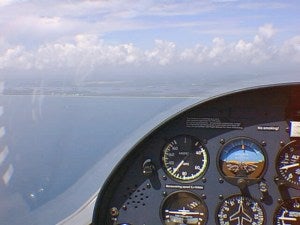 Every year the most common cause of aircraft accidents in this country is attempting to press on VFR into deteriorating weather. From time to time, pilots get into weather that is going downhill. Because many of them don't truly understand what is involved with scud running, have never been introduced to it under controlled conditions, and thus don't know what they are getting into, these ill-equipped pilots elect to try low, and make their first try at scud running. Hack spoke about pilots who tried to scud run in a situation like that with nothing but contempt. He said that a pilot who tries something he hasn't done before, hasn't planned and probably hasn't even thought about, is sentencing his passengers and himself to death. He likened it to the chess player who is losing and starts making desperation moves, sacrificing pieces unproductively while only briefly delaying the inevitable checkmate.
Every year the most common cause of aircraft accidents in this country is attempting to press on VFR into deteriorating weather. From time to time, pilots get into weather that is going downhill. Because many of them don't truly understand what is involved with scud running, have never been introduced to it under controlled conditions, and thus don't know what they are getting into, these ill-equipped pilots elect to try low, and make their first try at scud running. Hack spoke about pilots who tried to scud run in a situation like that with nothing but contempt. He said that a pilot who tries something he hasn't done before, hasn't planned and probably hasn't even thought about, is sentencing his passengers and himself to death. He likened it to the chess player who is losing and starts making desperation moves, sacrificing pieces unproductively while only briefly delaying the inevitable checkmate.
Hack's position, stated vehemently, was that because many pilots are uneducated in procedures and realities of scud running (whether by design or omission in training), many will attempt it because they simply do not fully understand why it can kill them if they try it as a reaction to deteriorating weather. I thought about what Hack said. After all, most of the pilots I know are reasonably intelligent, but no one's education was perfect (we're all ignorant, only on different subjects), so a mature discussion is appropriate. If nothing else, the FAA and others tend to forget that pilots are, by and large, a fiercely independent lot, and a huge proportion will respond to an admonition of "don't do that" by promptly going out and doing it. Hey, we pilots are the ones who so glorify "pushing the envelope" that we invented the phrase.
A Little History of Scud Running
Hack explained to me that it was possible to scud run in this country and safely get to a destination in some pretty low ceilings for much of time since the Wrights flew. I had read enough to know that even the earliest airline pilots, operating tri-motored Fokkers and Fords, sometimes flew just barely clearing the treetops in bad weather. Unfortunately, and sadly, according to Hack, that sort of thing is no longer possible because of changes wrought by mankind to our landscape.
From what I learned from Hack, and observed at Oshkosh this year, it's time for a frank discussion of scud running and why it has become too dangerous to conduct any more. In doing this, I'm going to talk about how to scud run, then I'm going to use that same discussion to suggest to an intelligent group of people, pilots, why changed conditions in this country have made it so dangerous that even pilots experienced at low flying have stopped the practice. Only the amateurs are scud running now, and they are dying. I know I will hear contrary views, and that's fine. This issue needs to be openly discussed.
So, What Is This Scud Running Stuff?
First of all, the name: low clouds, driven by the wind, have traditionally been referred to as "scud" (well before a missile of the same name became widely known). The practice of flying quite low to stay under the clouds was given the name "scud running" some time ago. It stuck. Part of the reason for the popularity was that it worked, at least in many parts of the country. When the U.S. Air Mail got going in the early 1920s, there was effectively no way to fly IFR. Altimeters had but one hand, and that hand made just one rotation of the face of the instrument from sea level to 20,000 feet. (If you ever are offered a chance to try to fly level using a "non-sensitive" altimeter, take it - but only in good VFR weather.) Gyroscopic instruments were largely unknown. When the weather was low, pilots flew lower. It was not uncommon for mail pilots to land with leaves and small branches in their landing gear. Those pilots also knew every single house, road and distinctive tree on their routes, as well as the magnetic heading from one to the next. They looked outside nearly 100% of the time, only glancing in the cockpit to check engine gauges. Still, a frighteningly large percentage of mail pilots died on the job. Most died in the mountainous stretches during bad weather, but flat-country weather claimed its share as well.
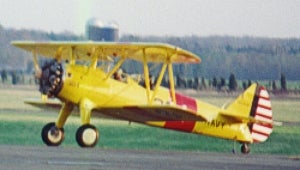 Through the 1940s, scud running was usually a matter of staying low and keeping track of where you were. If you weren't in mountainous country, the only thing to worry about was high-tension power lines. Pilots quickly figured out that the wires were invisible in many lighting and background conditions, so they looked for the poles and flew over the tops of the poles themselves, making a conservative assumption that the wires ran from the very top of one pole straight to the top of the next. As wires usually sag, that proved to be a safe way to cross the power lines. The word got passed along.
Through the 1940s, scud running was usually a matter of staying low and keeping track of where you were. If you weren't in mountainous country, the only thing to worry about was high-tension power lines. Pilots quickly figured out that the wires were invisible in many lighting and background conditions, so they looked for the poles and flew over the tops of the poles themselves, making a conservative assumption that the wires ran from the very top of one pole straight to the top of the next. As wires usually sag, that proved to be a safe way to cross the power lines. The word got passed along.
Broadcast radio in those days was on the AM band. That is not line of sight; there was no need to put up very tall towers or repeaters all over the landscape. The actual transmitters were usually located on top of the building where the radio station lived, meaning in town. The station would put enough wattage through the tower to reach listeners half a continent away with only the one transmission tower. Television transmitters were so rare as to be ignored. Other than the scud-running crew in the B-25 that smacked into the Empire State Building during World War II, pilots flying low in bad weather usually didn't fly over towns in the process, so hitting a tower wasn't high on the list of life-threatening concerns.
If you hear a World War II pilot tell a scud-running story, you are most likely to hear of following a railroad track while low enough to roll one's wheels. The story gets exciting when the tracks disappear into a tunnel. You rarely, if ever, hear a scud-running story from the first 50 years of airplanes in which radio towers play a part.
Is It Legal?
You'll get the standard lawyer's answer from me: It depends. Most of the time scud running is legal. Depending on the airspace in which you are flying, the visibility required is either one or three miles. Again, depending on airspace, required clearances may simply be "clear of clouds" or the measured distances of 500 feet below and 1,000 feet horizontal may apply. In all operations a pilot must fly high enough to make a successful forced landing if an engine fails, be 500 feet away from persons or property, or, in a congested area, at least 1,000 feet above the highest obstruction in a defined radius. Still, it is virtually impossible to legally scud run in a congested area. If you are 300 feet above an interstate the fact that you are flying over cars makes the operation illegal.
Rules? In a Knife Fight?
Select the altitude that gives the most visibility. This may be extremely low. Those who were trained in scud running learned that there were rules to be followed in order to survive. First of all, a pilot should fly at the altitude that allowed maximum visibility. It didn't take a genius to realize that the more one could see, the better. A pilot needed a usable horizon and had to be able to spot landmarks for navigation. Sure, that sounds basic, but it was the rule that had to be kept at the highest level of aeronautical consciousness. The condition of the cloud bases often determined how high one could fly. If the cloud bases were not well-defined, it was necessary to stay very low to get decent visibility, but then it became quite challenging to navigate because one just couldn't see much. If the cloud bases were well defined, it was best to stay as high as possible, so long as you had a horizon, thus simplifying navigation.
Minimum visibility is about two to three miles. When thinking back about the times Hack had arrived in the Super Cruiser under a low ceiling, I recalled that the visibility was never less than three or four miles. He explained that scud running in anything under three miles' visibility was extremely difficult and exhausting, thus, he would not plan a flight when the visibility was going to be that low. The fact that the ceiling was very low wasn't the variable that concerned him. He wanted to be able to see some distance ahead. While he knew his way around, he always had his finger on his map. It meant he had to look inside the cockpit at the map with some frequency. At 120 mph he covered a mile every 30 seconds. He wanted to have at least 15 to 30 seconds available to him to look inside at the map, or, later, his GPS. If the visibility was much less than three miles he not only didn't have a decent horizon, he didn't have time to look inside the cockpit, look back out and make the transition involved from looking inside to looking outside (it can take several seconds) and then be able to react before hitting something that might loom out of the mist. The math is pretty simple: When flying at 120 mph in one-mile visibility, you have 30 seconds before you hit something that appears at the limit of the distance you can see ahead.
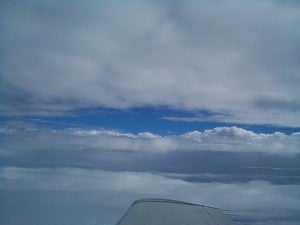 Get dual on a low ceiling and visibility day before scud running on your own. Hack looked at me and said that he has yet to meet a pilot, trained in the last 20 years, who was taken out by his instructor in two-mile visibility so the pilot could see just how terrible it is to fly in such conditions. In fact, he has met only a very few whose primary instructor insisted on them flying even one leg of a dual cross country at 500 feet or so above the ground. Interestingly, Hack said he believed that some pilots died trying an unplanned scud run because they could not make the intellectual leap to understand just how little one can see when the visibility goes down and how terribly different the world appears than on a good VFR day. I thought about the times I've watched instrument students struggle through their first circle-to-land approach in two-mile visibility and found that again I was in agreement with old Hack.
Get dual on a low ceiling and visibility day before scud running on your own. Hack looked at me and said that he has yet to meet a pilot, trained in the last 20 years, who was taken out by his instructor in two-mile visibility so the pilot could see just how terrible it is to fly in such conditions. In fact, he has met only a very few whose primary instructor insisted on them flying even one leg of a dual cross country at 500 feet or so above the ground. Interestingly, Hack said he believed that some pilots died trying an unplanned scud run because they could not make the intellectual leap to understand just how little one can see when the visibility goes down and how terribly different the world appears than on a good VFR day. I thought about the times I've watched instrument students struggle through their first circle-to-land approach in two-mile visibility and found that again I was in agreement with old Hack.If possible, have another pilot aboard to handle navigation. Hack's next rule was to try to have another pilot with him to help with navigation. He wanted someone who could read a map and keep him on the desired course. Hack wanted to look outside as much of the time as possible. Map and GPS reading and interpretation meant head-down time, every moment of which was perilous.
Plan the flight, completely. Hack firmly believed in the rule about planning a flight. Hack planned his flights. All of them. If he knew the weather met his own personal minimum visibility, he planned to fly under low clouds. He never departed with less than four miles' visibility. During our discussion of the flight-planning rule, Hack again remarked to me that most of the folks who were flying low in reduced visibility were doing so because they let themselves get forced into it. They didn't plan to do so in the first place. As a result they were merely reacting to a situation rather than being proactive and conducting something that was the result of some forethought. He asked me to recall some of the accident reports on scud running that I'd seen. A significant proportion of the pilots were instrument-rated and current. However, they had started out under VFR in weather that was shaky. On running into lowering ceilings, the pilot simply tried to go lower, without a definite plan. Once the visibility became less than about three miles, the awful end was pretty well ordained because the pilot was unwilling to climb, admit his problem and get an instrument clearance. Unfortunately, those pilots acted on the axiom, "it's better to be dead than embarrassed."
Know where the alternate airports are and how to get into each one. Part of Hack's flight planning was to note every single potential airport to which he could divert if the weather went bad. He noted the way into each airport, boldly circling terrain and obstructions on his chart. If something went wrong, he had several contingency plans in his back pocket.
Determine the minimum acceptable altitude over the terrain before departure. When learning to fly, Hack learned never to completely rely on his engine. As he looked for available airports along his route, Hack's flight planning included a review of the land over which he was going to fly. In the Midwest, he could land almost anywhere, so he could fly quite low and do just fine if the engine decided to take the rest of the day off. In more rugged terrain his idea of scud running sometimes meant he would go no lower than 2,000 feet above the rocks. When not following a highway or railroad for navigation, my friend would alter his course as needed to stay within gliding distance of suitable places to land.
Fly directly over the right lanes of divided highways. As the interstate system was developed, scud runners had a wonderful aid to navigation and safety. After a few head-on, midair collisions, over the median, pilots figured out that they should stay over the right lane. They also learned to stay directly over the pavement because some states built rest areas and towers in the medians.
Keep the airplane trimmed at all times. Experienced scud runners also knew they had to keep the airplane trimmed correctly at all times. They could not afford any altitude drift when their attention was diverted. They had to be able to hold altitude within plus or minus fifty feet without fail.
There are power lines across river valleys. Hack sometimes found that river valleys were helpful for navigation and freedom from towers (towers are built on high ground, for obvious reasons). But, after some scares with power lines, he learned that it is very common for high tension lines to be stretched completely across river valleys, unmarked and invisible, with the supporting poles hidden by trees. He never flew below about 100 feet above the hills on either side of a river valley. As he spoke, I recalled my CAP cadet days when our wing commander died in a T-34 when he was flying low down a river valley and hit power lines.
Avoid towns and cities. My new instrument student also explained why he never flew low over any sort of a town or city: There was no place to land in an emergency and too many things stuck too far up into the air. Hack knew and could quote the FARs on minimum altitudes and admitted he was not always 500 feet away from persons or property, although he would only go closer than that if he could turn away and land should there be a problem. He also never flew over congested areas where the altitude requirement went to 1,000 above the tallest obstruction. He was pragmatic; he knew someone would turn him in. Interestingly, he had done his homework; he knew that heavy traffic on an interstate was considered a congested area.
 Hack had lived by the rules of scud running. He planned his flights very carefully. He violated surprisingly few FARs, and then, not with any frequency. I came to respect Hack's perspective on VFR flying. He pointed out that more than once he had flown quite safely on winter days, below a 1,500-foot overcast with unlimited visibility, after watching me cancel a trip. I had refused to go because of ice in the clouds. It simply hadn't occurred to me to go VFR those days.
Hack had lived by the rules of scud running. He planned his flights very carefully. He violated surprisingly few FARs, and then, not with any frequency. I came to respect Hack's perspective on VFR flying. He pointed out that more than once he had flown quite safely on winter days, below a 1,500-foot overcast with unlimited visibility, after watching me cancel a trip. I had refused to go because of ice in the clouds. It simply hadn't occurred to me to go VFR those days.
Despite superb flight planning and religiously abiding by the rules, Hack had stopped scud running. Something had changed. I wanted to know what it was.
An Experienced Scud Runner Watches the World Change
In the '60s, Hack noticed that TV transmission towers started to become more common in rural areas. He saw that the sectional charts didn't always keep up with the location of the towers, so he made notations on his charts of all the towers he saw. Then, towers taller than 1,000 feet started to be constructed. The guy wires for some of those monsters sometimes stuck out as much as 800 to 1,000 feet on each side, creating a very big, almost invisible, net in the sky. It got progressively worse in the '70s when line-of sight FM radio became popular.
By 1980, the stunning proliferation of very tall towers, even in the most remote areas, caused Hack increasing levels of discomfort, although he observed that they were lighted and the folks responsible for keeping the lights illuminated seemed to do so. The first time he saw a tower constructed with its guy wires crossing a major highway nearly gave him heart failure. The guy wires had neither lights nor balls on them.
In the 1990s, Hack watched the growth of cellphone towers carefully. He tried to keep track of those towers, but they multiplied at an astonishing rate, particularly along, and very close to, interstate highways. Over the last few years, he learned that the aeronautical charts were not required to illustrate towers below a certain height. In addition, if shorter than a certain height, towers are not required to be painted bright colors, as required of their taller relatives. He read the recent notification that the FAA is seriously considering not depicting towers under 600 feet in height on sectional charts, and came to the realization that the FAA simply doesn't give a tinker's damn about flight safety for those in the lower portions of our atmosphere. He also noted that, more and more frequently, those folks who were supposed to maintain tower lighting systems weren't doing their jobs.
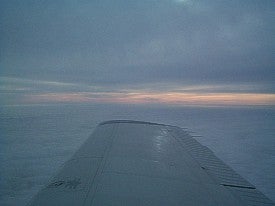 The last straw came a few days earlier, during a flight home, while giving a wide berth to the 1,100-foot tower several miles north. Looking carefully, Hack was able to pick it out against a gray sky. Angrily, he once again noted that the strobe lights on it weren't working. In a few more minutes, as dusk fell, the tower would become invisible.
The last straw came a few days earlier, during a flight home, while giving a wide berth to the 1,100-foot tower several miles north. Looking carefully, Hack was able to pick it out against a gray sky. Angrily, he once again noted that the strobe lights on it weren't working. In a few more minutes, as dusk fell, the tower would become invisible.
That did it. Hack was used to flying low. He had been trained to do it safely. He followed all of the rules for scud running religiously, particularly rule number 1 regarding flying at the altitude that gave the best visibility, even if it meant flying very low. The ugly, and deadly, conundrum is that flying where the visibility is greatest (and it may be only a couple of miles, if that) too often puts one down where the incredible proliferation of towers on our landscape has simply made it unreasonably dangerous to be, even with the most careful advance planning. Simply stated, if you put the airplane where you can see the farthest, you are down where the towers grow, where they don't have to be depicted on the chart and where some of them are impossible to see against the prevailing background.
Hack told me that he will no longer fly VFR under 1,000 feet above the ground, during the day, unless he has five miles' visibility and he won't fly that low at night except to take off and land because towers are not being consistently illuminated. It seemed to him, he said, somewhat propitious to choose to end this millennium by ending scud running and to start the new one with an instrument rating.
As he finished talking, I found myself in agreement with Hack. There are simply too many man-made aeronautical weeds sticking up in the air for it to be possible to scud run any more. We lost a planeload en route to OSH this year. They hit a wind generator. That's a relatively unusual thing to strike while flying, but it is symptomatic of the fact that now there is always something to hit. Cellphone towers line the sides of interstates. A pilot trying to stay low over the right lane, and paying attention to business, can still get pushed into one by a good wind gust in a matter of seconds. Ten seconds of head-down time with a map is now all it takes for a pilot low over the interstate to stray into a cellphone tower. After all, cellphone towers are specifically built to be just under the height for reporting and marking on aeronautical charts. Don't forget that community beautification projects have caused many cellphone towers to be designed to blend into their surroundings. Think you can see all of them? Want to bet your life?
The needed visibility for low flying has gotten to the point that scud running cannot be done with any reasonable hope of survival for any length of time. Don't believe me? Try something: Draw a line on a sectional between the airport you ordinarily use and an airport at least 100 miles away. Chances are that your line passes over or within two miles or so of at least one 1,000-foot tower and at least three shorter ones. I'll also guarantee you that it passes very near at least three towers that aren't on the chart.
So, what's the alternative to trying to scud run when you get yourself into deteriorating weather? Climb and call ATC, or in the blind on 121.5, and get an instrument clearance. Will you get a violation? Probably. (So file the NASA report when you get home.) Will you survive the experience? Most likely. It's a heck of a lot more likely that you and your passengers will survive than if you try to go low. Is your passenger's life worth trading to avoid a violation? I hope you are willing to be embarrassed rather than dead. You're one of my readers, and I need every single one.
I'm looking forward to flying with Hack as he works on his instrument rating. I like him and I like his Super Cruiser. I'm also very glad that Hack survived the transition in aeronautical eras from when scud running was a practiced art of travel to where it became something too dangerous to contemplate. A hell of a lot of pilots and passengers didn't.
See you next month.




